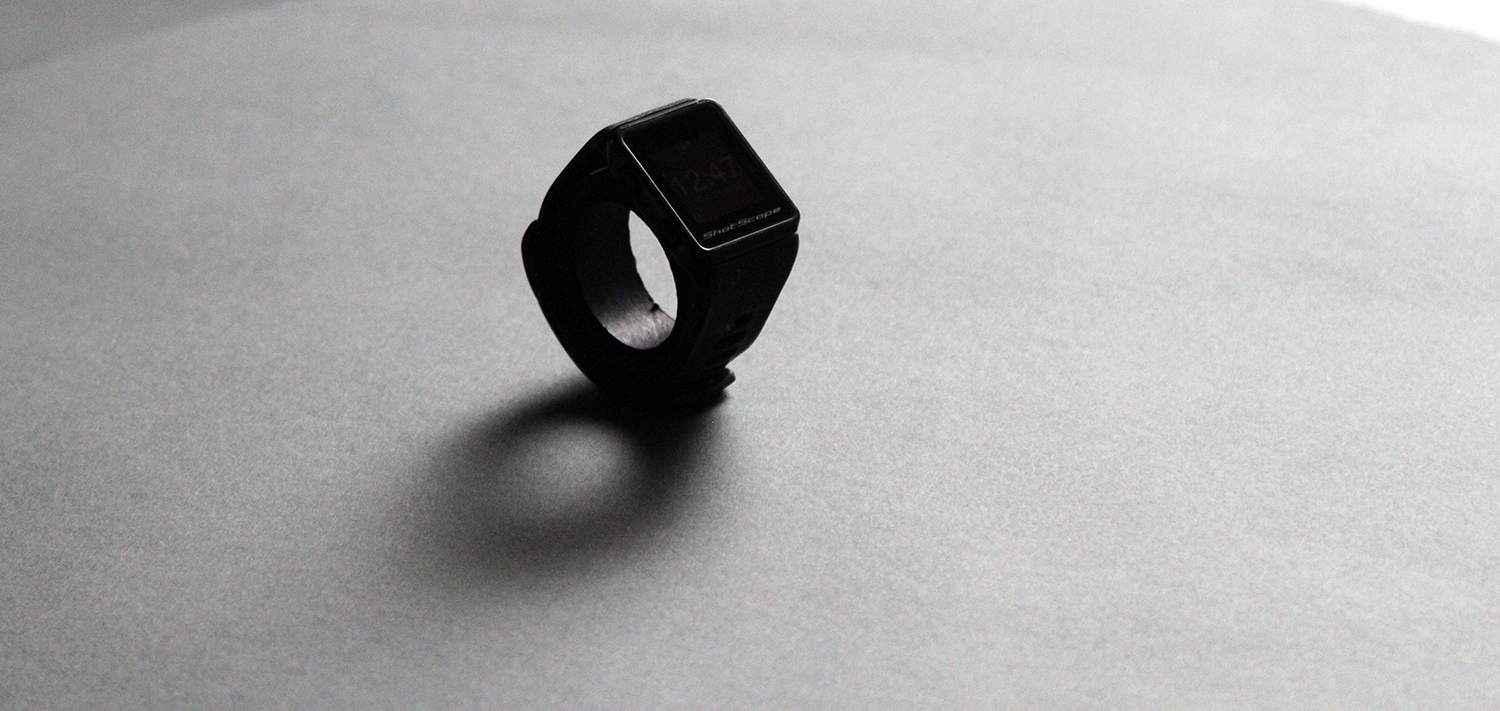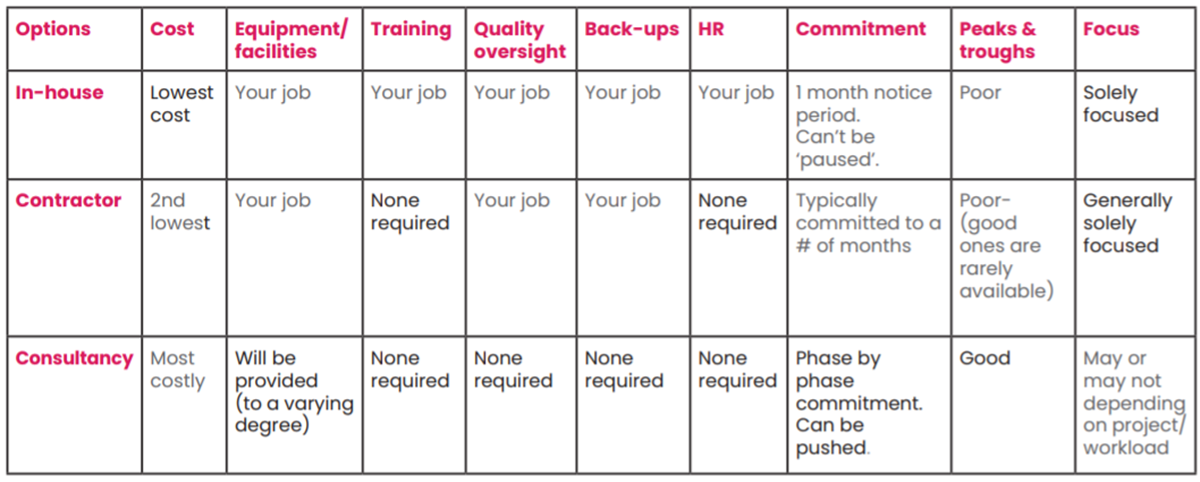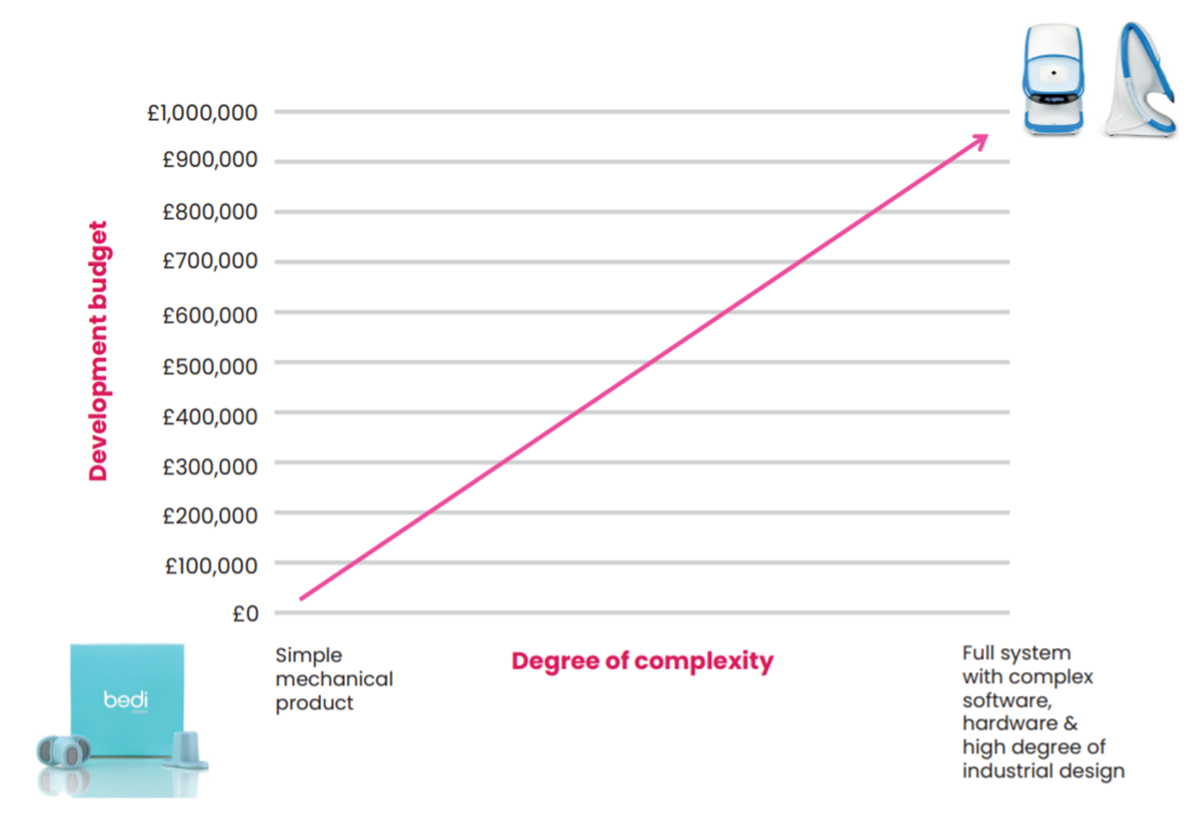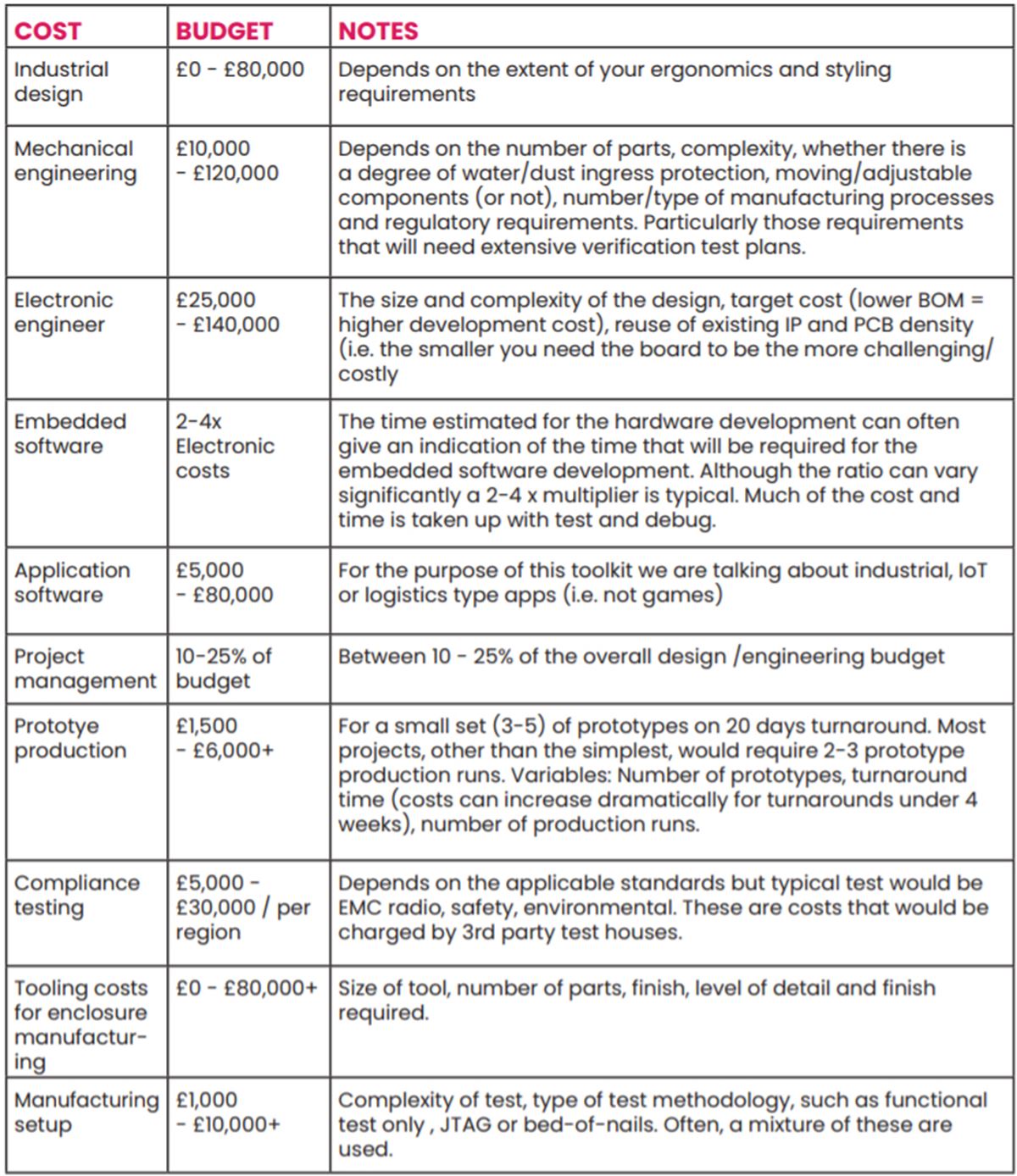
One of the key components of a company’s business plan is a detailed development budget. Some may argue it is the most important. Without a true sense of the cost involved to successfully develop your product there is no point even starting the development as you may never have the time or funds to complete it.
Each product based on its size, complexity and classification (to name but a few of the cost contributors) will require a differing level and proportion of budget allocated to the design, prototyping, certification and manufacturing set-up costs. This article provides an example budget range for each of the main costs associated with product development that you should consider in your overall budget.
Before you can determine the design and engineering effort required to bring a product to market, you must first be able to clearly articulate the marketing and technical requirements of the product. This will form the brief for your internal or external team to guide the development of the current and future iterations of the product. Once you have these requirements you can start to plan out not only the design effort but also the capital expenditure and 3rd party costs. The latter costs are often overlooked or underestimated at the outset of a development project. This may be because these costs are incurred 9 to 18 months after the project commences and a bit of “out of sight, out of mind” might be at play. It’s also true that they can be difficult to gauge when you are at the pre-concept phase with no clear picture of the number or complexity of the components and associated tooling. Therefore, in the long run it’s worth investing in your own staff or partnering with a design team that have experience with designing and seeing all the way through to manufacture a similar type of product.
There are three main options for resourcing the design of a product. Each option has its own pros and cons. This article will walk through how you can decide if outsourcing part or all of the design work would make sense for your particular situation.
Deciding to outsource to a Design Partner is an important decision that requires careful consideration. You will need to consider the in-house expertise at your disposal, the capacity available within your organisation, and the required budget to outsource the work. The diagram below gives a useful decision tree highlighting the important questions you need to ask.

There are three main options available when considering your design and development work:
In-house
This is generally the lowest cost option but requires space, equipment, training and oversight. Having a full development team within your organisation is of course useful, especially when you are busy, but can be inflexible when managing peaks and troughs of activity.
Contractor
As per a consultancy, more budget is required for this option as contractors will charge an hourly rate that includes overheads and profit. You will still need to provide design reviews, project management and in most cases technical leadership. There is often the option to pause contract work but you will need to keep paying the contractor during down time to ensure they are free when you wish to start again. For longer pauses in work you can let them go and hope they are free when you need them next.
Consultancy
This is usually the more costly option as the company often carries more overheads due to the wider support team that offers project management, technical leadership, internal design reviews and prototyping facilities. The consultancy will have multiple projects on the go. Therefore, when you pause a project for a few weeks or a month, the team that was working with you can be switched to other projects for that time being and you won’t be charged for the pause whilst you raise further funds or work out a technical issue.

This is probably the first question to ask yourself as an organisation and you must make sure that you have completed and summarised your customer research. Consultancies will expect you to have answers to questions such as: What is you product’s unique selling point (USP)? Where will it be used? What is the ecosystem around the product (servicing, connectivity)?
Surveys can provide important input but it is vital to observe people engaged in using a product or service (such as your competitors) and hold and record conversations with your future customers. Employing the POEMS (People, Objects, Environments, Messages and Services) observation methodology can help with consistency in the collection of such data. All of this should give you an indication of how your product is going to be used, what your target manufacturing cost is and who the key stake holders are.
Key considerations:
✓ Stakeholders can be external e.g. customers, investors, manufacturers, regulatory bodies, installers & distributors and internal e.g. sales, marketing and technical.
✓ Stakeholder wishes have a huge influence on the features of the product you develop.
✓ You won’t be able to satisfy all of your stakeholders all of the time therefore choose wisely on who you decide to please.
A thorough understanding of the competition is critical when positioning your own product/ service, identifying your unique selling point and understanding how it will be used.
Key considerations:
✓ Competitors are a good source of information, learn from them on what do they do well and not so well.
✓ Undertake product teardowns to see what makes them tick.
✓ This brings clarity on what your product needs to do and thus will help inform the detailed requirements which will make up your product design brief.
Defining your product requirements is something that can be done with support from a design consultancy – some will charge for this support and some will not. Typically the refinement of the overall project plan happens in the first phase of work if your project is at the beginning of its journey. This is called the Product Requirements and Planning Phase.
Key considerations:
✓ Listen to what the market research and stakeholders tell you and use it to help shape your product offering.
✓ Ensure that you’re happy with the Stakeholder wishes you’ve selected and remember you won’t please everyone.
✓ Use all of the input gathered to generate marketing and technical requirements.
✓ Be clear in your articulation of your requirements, you’ll need to communicate these to third parties.
✓ Poorly thought out requirements will cause you problems down the line, mostly in time and money and probably relationships.
✓ If in doubt in what you should be doing, seek advice from specialists.
It is important to set sensible and clear milestones for your development and it is unreasonable to think that what you initially launch with will be exactly what the end customer will want.

Agile development can be key and you must be careful what you brief your design partner to deliver. Is it the earliest testable product, is it the earliest sellable product with a reduced scope of features or are you shooting straight for the lovable product? The delivery of each milestone comes with its own timeline and development cost.
Key considerations:
✓ Your product design journey will require different prototype solutions at each stage of the development. Different stakeholders will have different requirements.
✓ Your choices will be a compromised balance of satisfying stakeholder wishes, timescales and project budget.
The total development budget required to get a product through development and into the market depends on the degree of complexity of the product. Factors which will impact on this budget include whether bespoke electronics or mechanical parts are required and whether the product will be used in a regulated industry.


Outside of the development costs you need to consider the full picture of expenditure for a company developing and a product and bringing it to market. Be aware that cash expenditure will rise significantly the further along the development path you go and be careful not to underestimate the amount of investment you’ll need. Expect the unexpected and build in contingency.

✓ Market Research
✓ Sales & Marketing
✓ Patent Attorney
✓ Legal
✓ HR
✓ Accountancy
✓ Regulatory Fees
✓ Product Development
o Design Fees
o Prototyping Costs
o Test Costs
o Tooling Costs
✓ If they haven’t given you a detailed breakdown ask for one.
✓ What have they explicitly included and excluded (e.g. list of activities and prototype costs)?
✓ What is going to be your level of involvement in the project at the various phases?
✓ Who will be your project manager? Try to meet them first to make sure you get along.
✓ Who are the technical leads and who are the team members that will be doing the bulk of the work?
✓ Review their conditions of business – governs intellectual property creation/ownership, termination, liability etc.
✓ What is their level of experience (i.e. years working in industry), how many products have they worked on, have they worked with similar processes and materials required for this project?
✓ Considering all the costs (i.e. not just the design work), be upfront about what you can afford now and in the medium to long term so you can adjust the plan according to your cash flow.
✓ Do your background research on the companies you’re talking to – get a credit check and try to get testimonials from the companies they have on their website who maybe haven’t supplied quotes.
Copyright © 2024 i4 Product Design Ltd. All rights reserved. | Privacy Policy